Most Endangered Places Program: Updates & New Additions
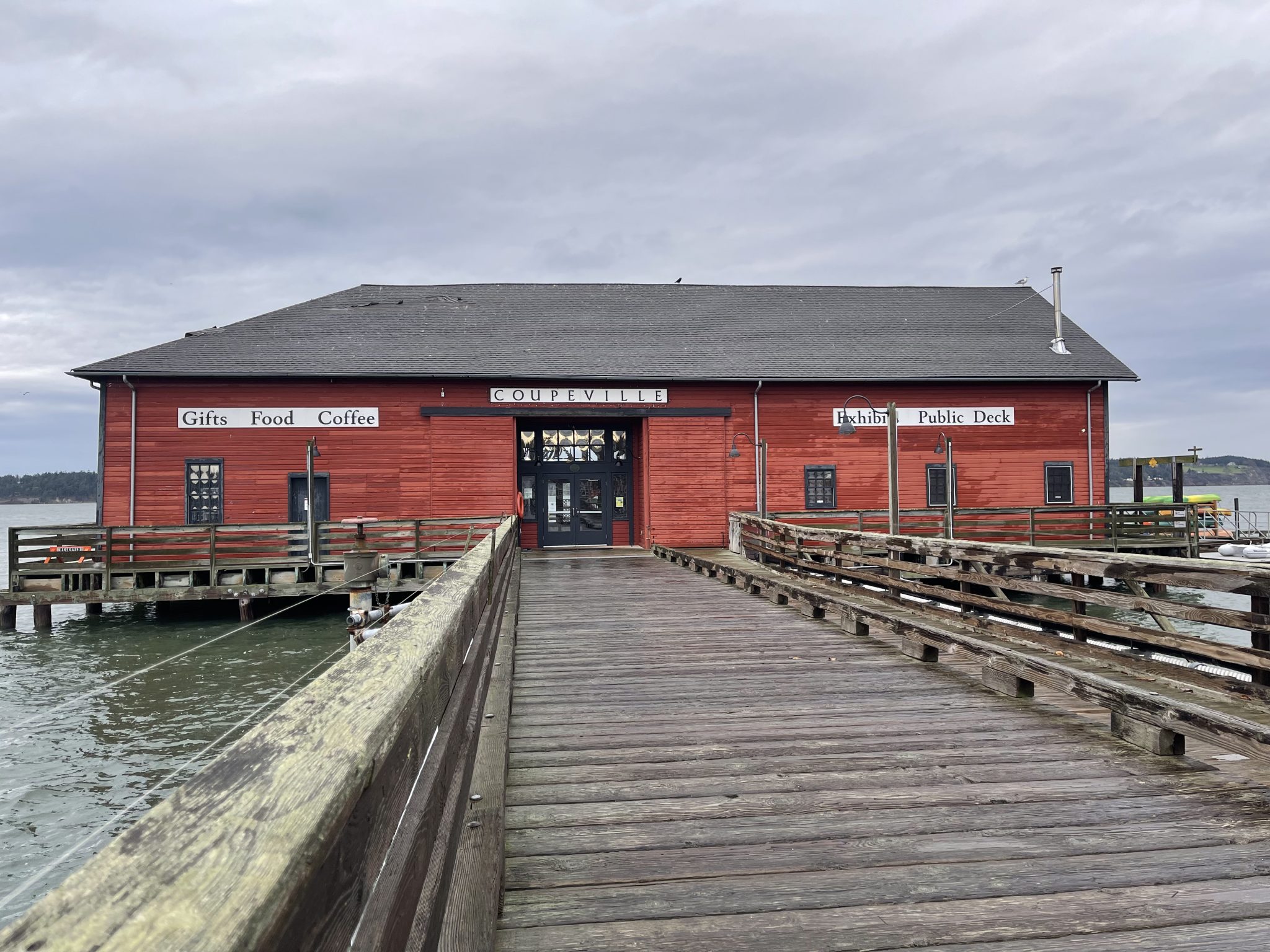
Photo: The historic Coupeville Wharf, now one of Washington’s Most Endangered Places. Photo courtesy of Sound Water Stewards.
It’s been an exciting spring for Washington’s Most Endangered Places! We’re happy to share two major updates on ongoing campaigns and to announce two new additions to the Most Endangered Places list.
Since 1992, the Washington Trust has maintained a list of Most Endangered Places, bringing attention to threatened buildings, sites, and historic places. While circumstances may vary—buildings might face demolition, incompatible development, or even just a lack of access to funding—all of the sites featured on the Most Endangered Places list are important historic and cultural sites facing difficult odds for survival. To help advocate for these sites’ preservation, the Washington Trust provides a variety of services, including technical assistance, testimony with local governments and commissions, facilitation of connections between local partners and elected officials/decisionmakers, and more.
Updates on Ongoing Campaigns
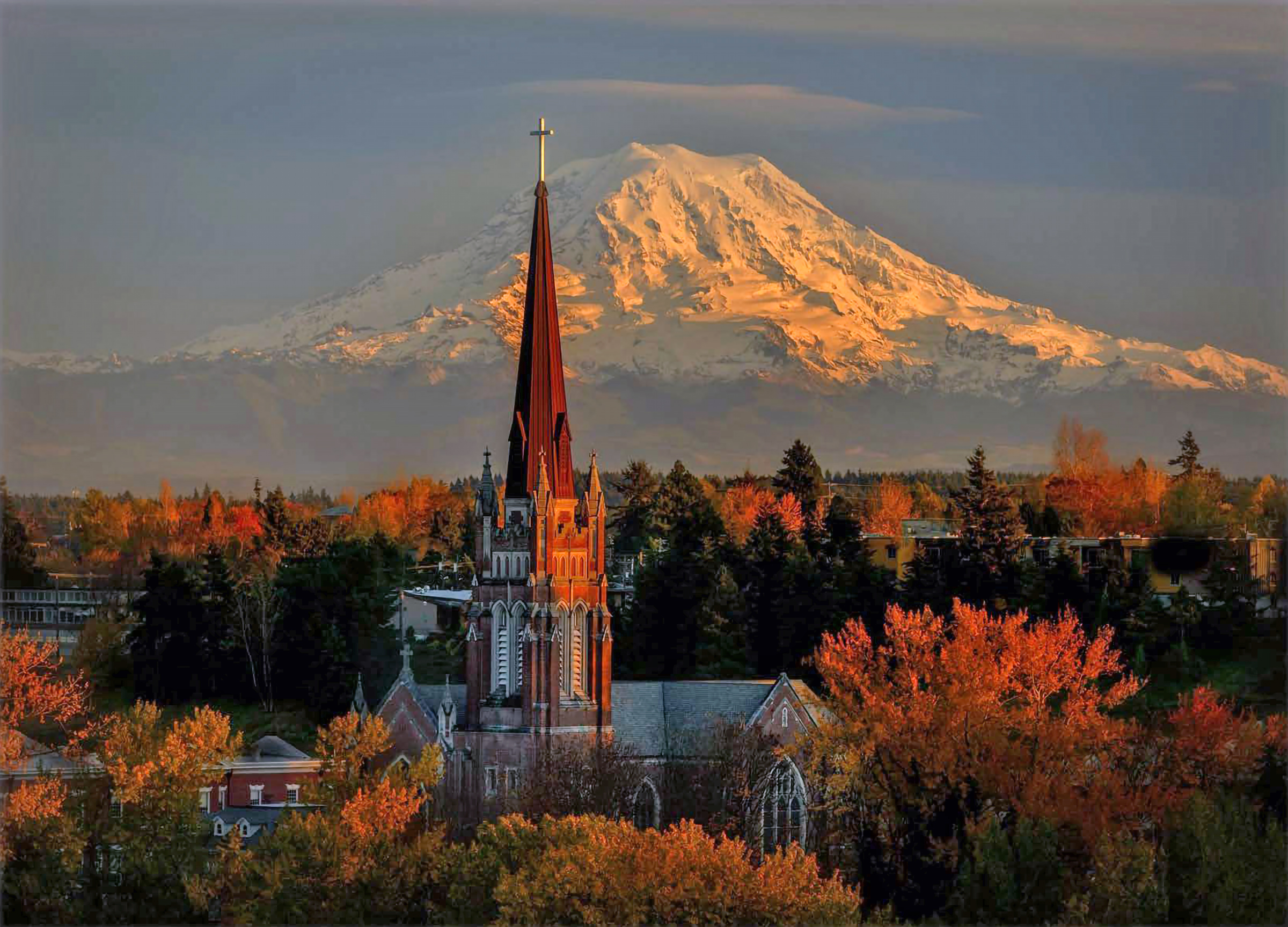
Photo: Holy Rosary Church towering against Mount Rainier. Photo courtesy of Joe Becker.
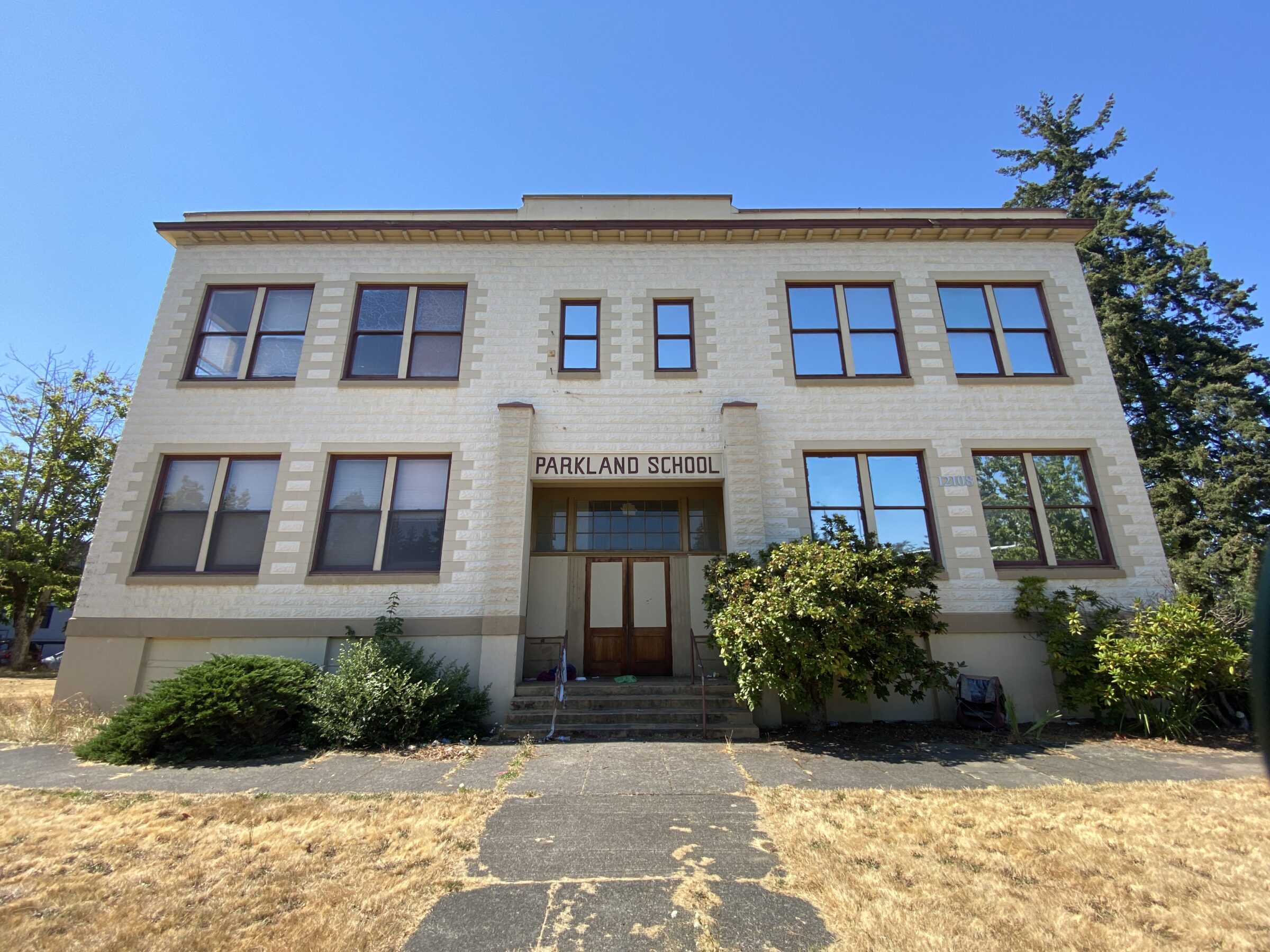
Photo: Old Parkland School in Parkland. Photo courtesy of Huy Pham.
Holy Rosary Church in Tacoma was added to our Most Endangered Places list in 2020, when the church was condemned and slated for demolition by the Seattle Archdiocese. Since then, we’ve been working with our local partner, Save Tacoma’s Landmark Church, to advocate for saving the building, and on May 1, it was announced that the Vatican had officially weighed in! The Vatican sided with Save Tacoma’s Landmark Church, declaring the decree to demolish Holy Rosary null and void. While there’s a lot more to be figured out in order to call this campaign a “save,” this is certainly a step in the right direction.
The Old Parkland School in unincorporated Parkland in Pierce County was added to our Most Endangered Places list in 2022, when demolition was sought by the building’s owner, Pacific Lutheran University. But local residents fought back, forming the Parkland Community Association and joining forces with us at the Washington Trust. We’re happy to report that on May 9, the Parkland Community Association signed papers with Pacific Lutheran University to close on the purchase of the building, which will be used as a community center.
New Most Endangered Additions
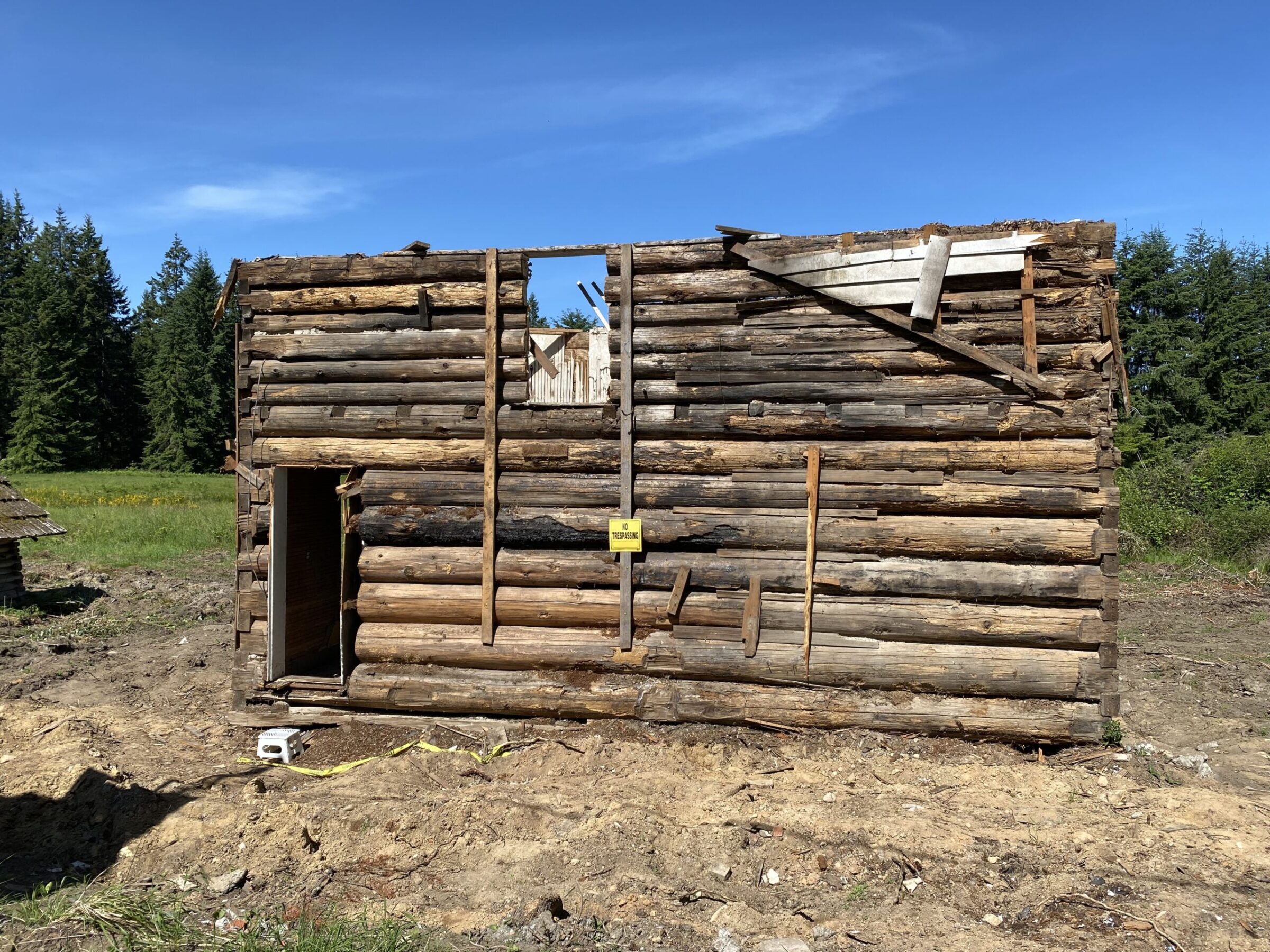
Photo: The newly discovered Langley log cabin. Photo courtesy of My Northwest.
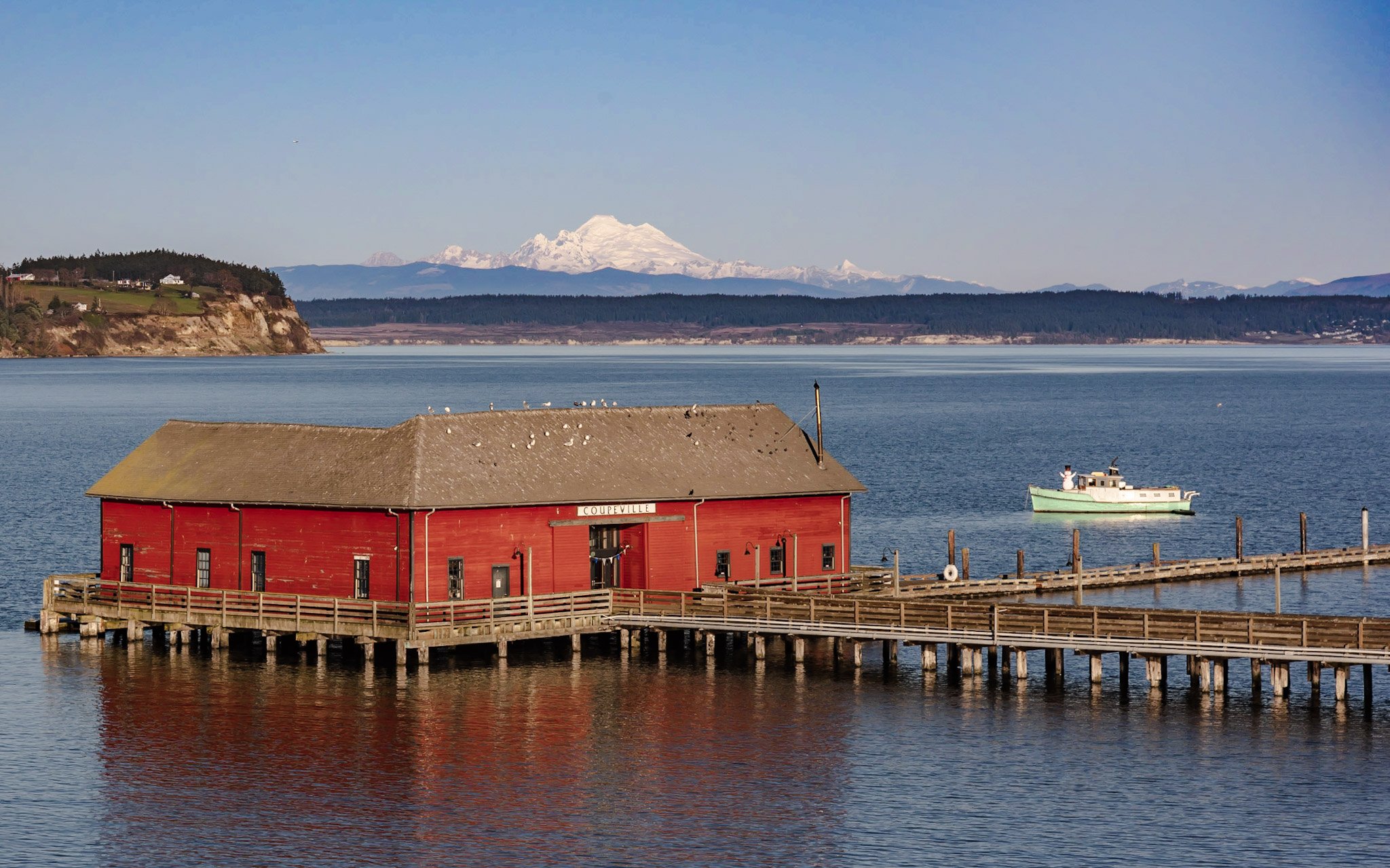
Photo: The historic Coupeville Wharf. Photo courtesy of the Coupeville Historic Waterfront Association.
At our annual Vintage Washington event on May 18, the Washington Trust announced two brand-new additions to our Most Endangered Places program: the Langley log cabin and the Coupeville Wharf, both located on Whidbey Island.
A recently discovered historic log cabin near Langley has been named a Most Endangered site. Property owner Marian Myszkowski was demolishing a condemned building on her property, but when the outer shell of the building was torn down, inside she found a hidden log cabin dating from decades earlier. While little is known about the log cabin’s provenance or original function, it is estimated to date from somewhere between the 1850s and the 1880s, from the earliest years of Whidbey Island’s white settler history. Upon its discovery, Marian contacted the South Whidbey Historical Society. One of the society’s volunteers, retired historian and cultural resource specialist (and Washington Trust board member) Kyle Walker, has taken on the project of investigating the cabin’s origins. In the meantime, the log cabin has been named to the Washington Trust’s Most Endangered Places list in order to raise public awareness and funding.
The Coupeville Wharf is the latest addition to the Most Endangered Places list. Built in 1905 for passenger travel and importing/exporting products between Whidbey Island and the mainland, over the decades the wharf became Coupeville’s most iconic building. Currently owned by the Port of Coupeville and part of Ebey’s Landing National Historical Reserve, its biggest threat today is climate change. As a 120-year-old wooden structure situated directly over the water, the wharf is affected by rising sea levels and increasingly frequent king tides. According to local government projections, the wharf will be flooded by the year 2050. The Port of Coupeville hopes to save the structure by raising it—a project that will cost $5 million. The Washington Trust has named the Coupeville Wharf to the list of Most Endangered Places to support the Port of Coupeville in finding funding and to draw attention to the perils to our state’s historic resources posed by climate change.
Want to get in touch about any of these Most Endangered Places campaigns? Contact our Preservation Programs Director Moira Nadal at mo***@pr********.org.
